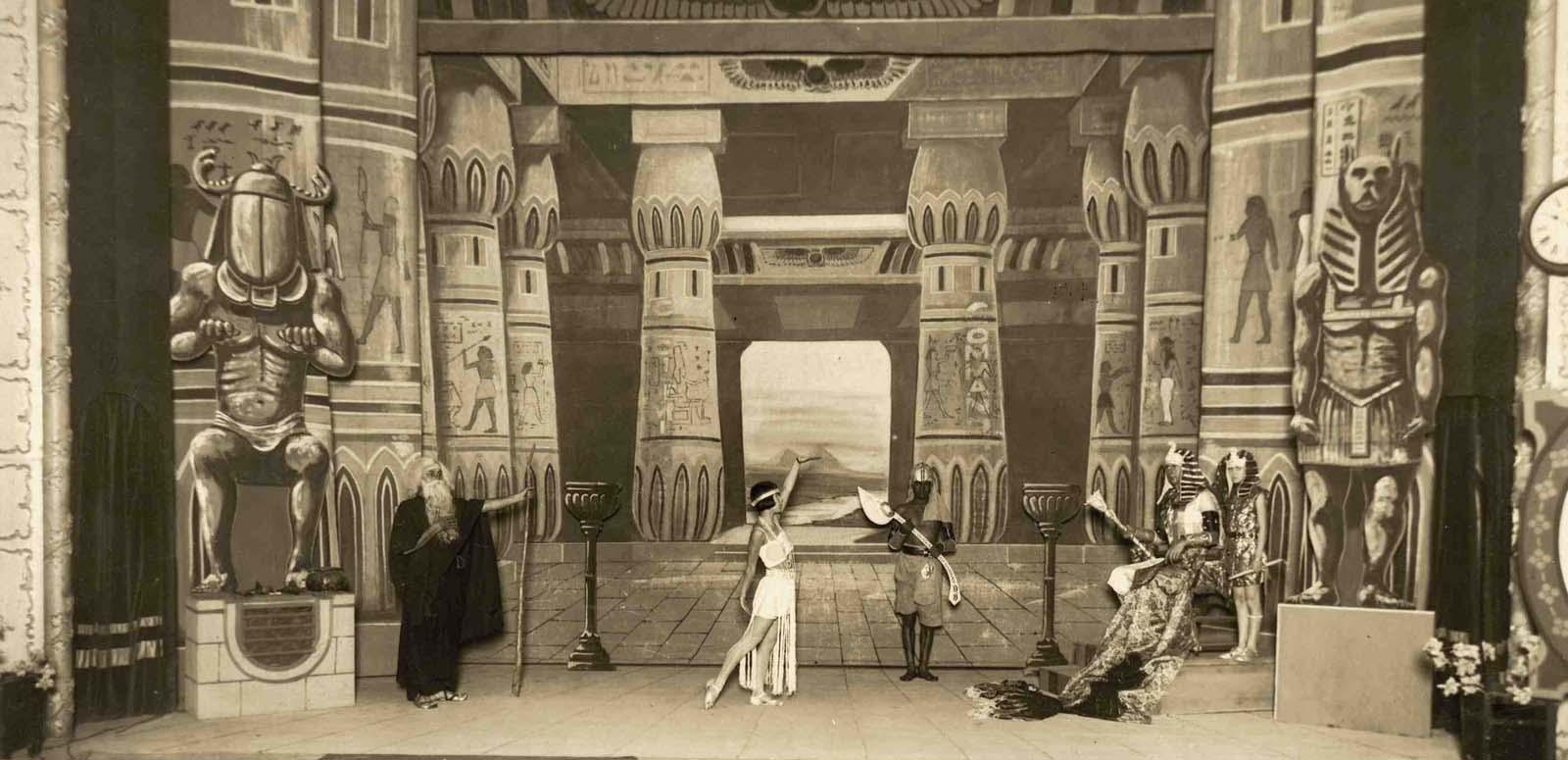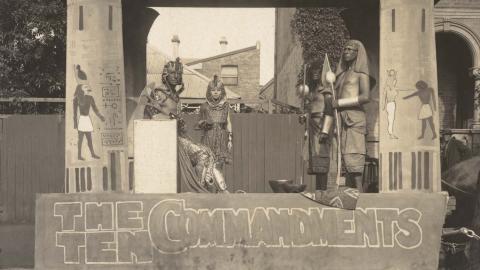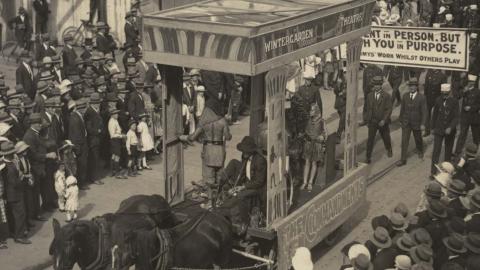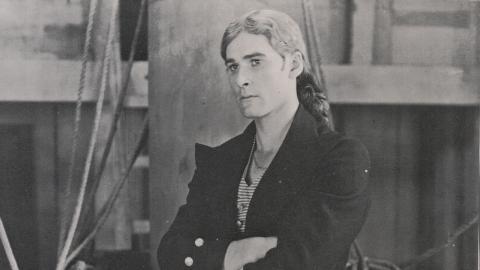This is the first in a three-part series. Read Part two and Part three.
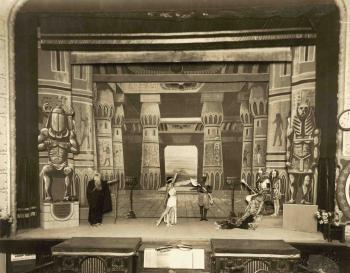
Hollywood, local filmmakers and regional Australia intersect in the story of Franklyn Barrett’s touring of a live prologue to Cecil B DeMille’s The Ten Commandments in Far North Queensland, 1925.
Jeannette Delamoir researched the NFSA Franklyn Barrett Collection as part of her Scholars and Artists in Residence Fellowship at the NFSA in May 2011.
Right: The stage setting for The Ten Commandments live prologue, theatre unknown. Click image to enlarge.

